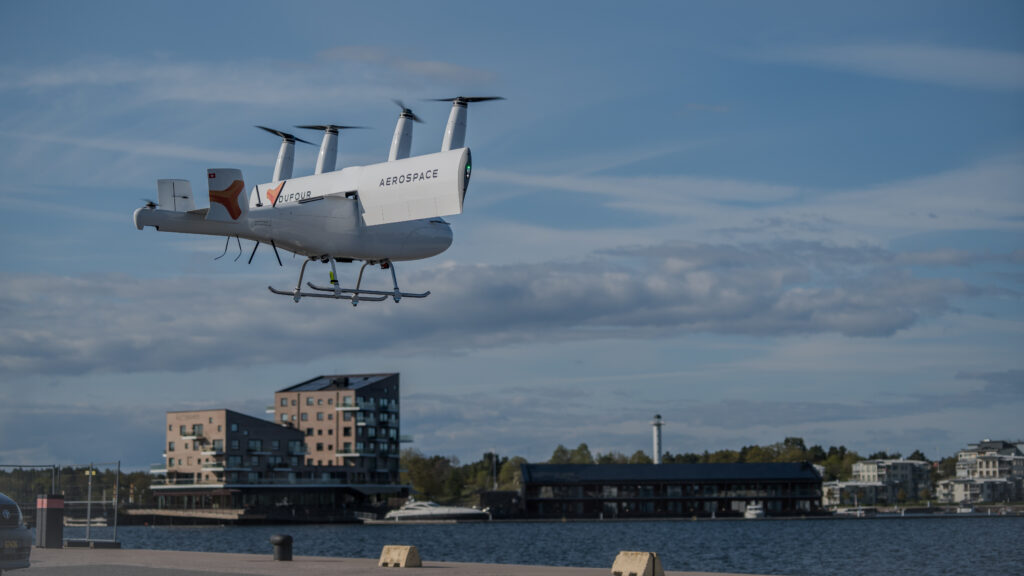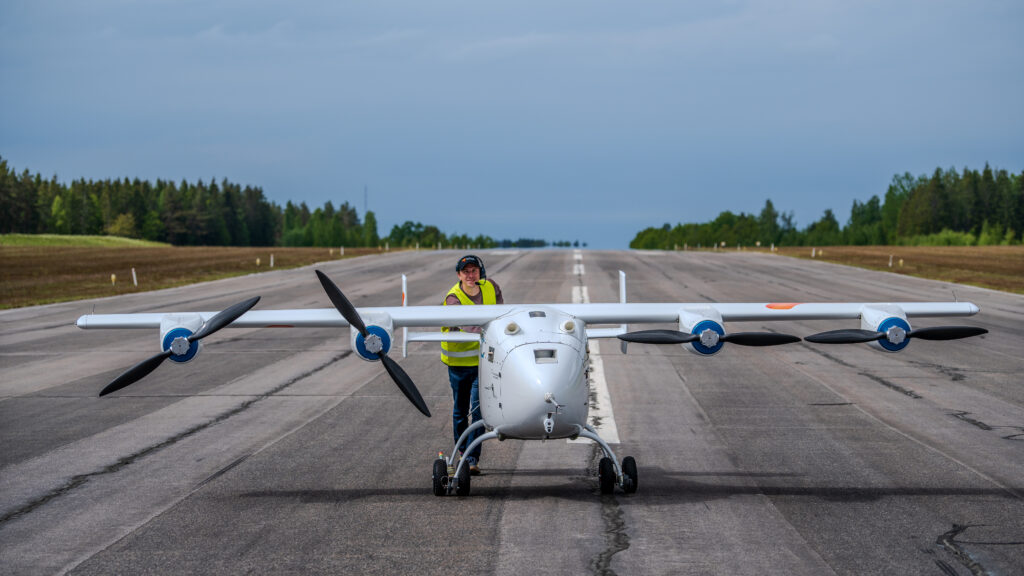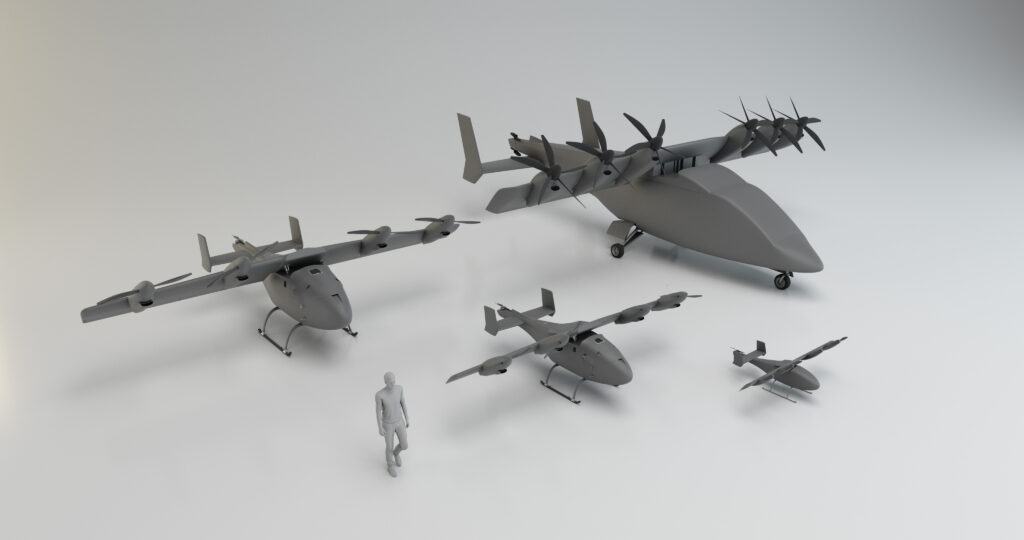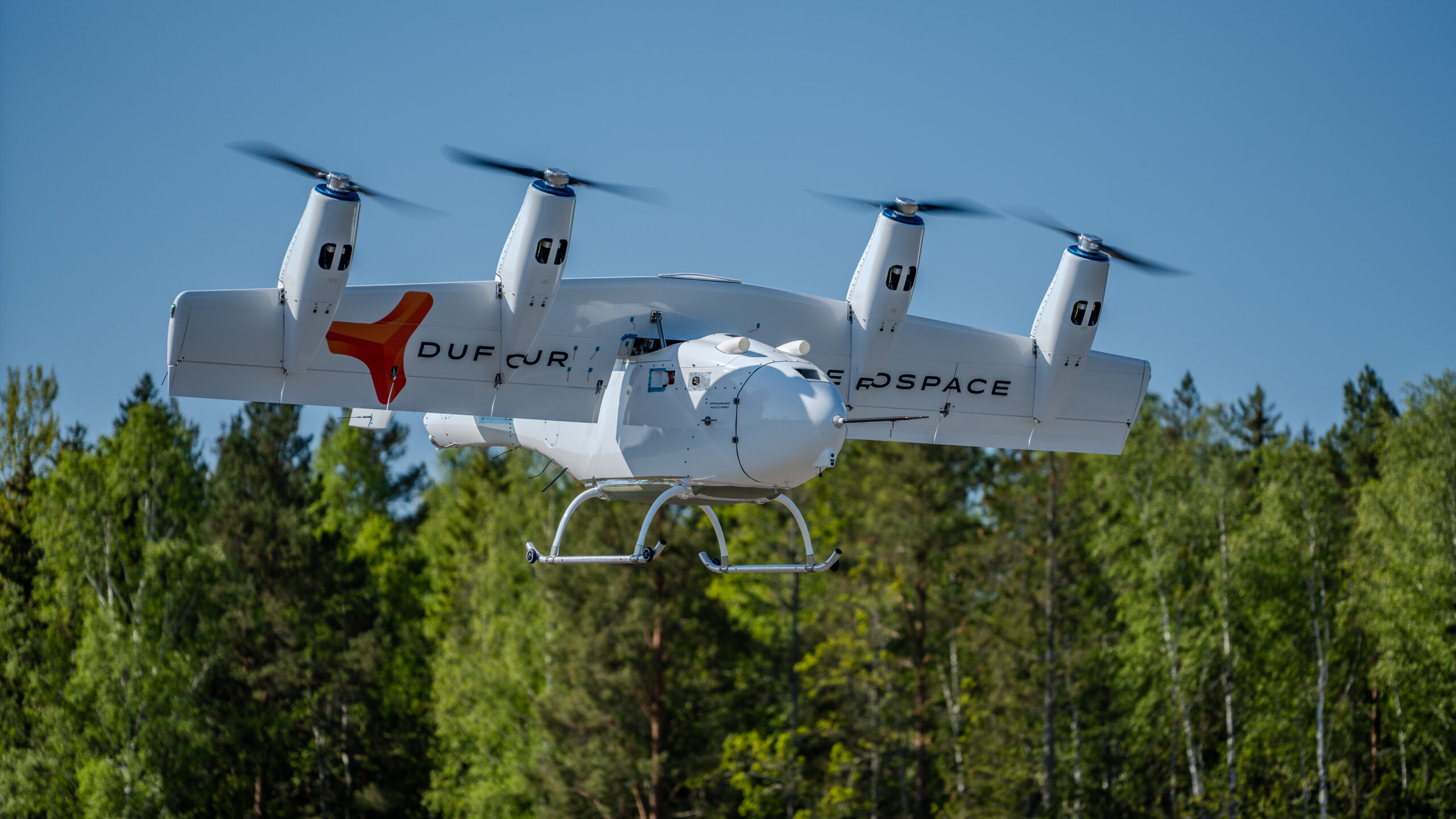Switzerland has long been associated with precision engineering and innovation, and this pedigree is evident in the work being done at Dufour Aerospace. Based in Zurich and led by CEO Sascha Hardegger, Dufour aims to carve out a compelling niche in the world of rugged electric vertical takeoff and landing (eVTOL) drones. In a recent episode of the Dawn of Autonomy Podcast, he outlined the journey that took him from managing life-saving helicopter missions in the Alps to the world of cutting-edge of drone technology, as well as how Dufour has reimagined aerial logistics, healthcare and a wide range of other missions with its “Swiss Army Knife” fleet of tilt-wing drones.
From Rega HEMS and SAR to Leading Drone Innovation
Before taking the helm at Dufour Aerospace, Sascha Hardegger’s career took root in the high-stakes world of Helicopter Emergency Medical Services (HEMS) and Search and Rescue (SAR). With a background in political science and experience in journalism, military peace keeping operations and government communication, Sascha eventually found his calling at Swiss Air-Rescue Rega, Switzerland’s leading rescue helicopter service. He worked there in different functions for 12 years.
By the end of his tenure, he led the helicopter operations department, managing all the helicopter bases and the intervention center. He also spearheaded the Innovation Cell, where he launched the organization’s first drone program focused on high-altitude SAR. Conducting these drone missions in Switzerland’s challenging alpine terrain gave him firsthand appreciation for the potential and perils of unmanned aerial vehicles (UAVs). It ultimately led to his connection with the co-founders of Dufour Aerospace, and his current position as its CEO.
Dufour Aerospace: A Vision Born in the Alps
Dufour Aerospace originated with equal parts passion and practicality. Around 2015, aviation enthusiasts and aerobatic pilots in the Swiss Alps, Dominique Steffen and Thomas Pfammatter (also an experienced rescue helicopter pilot) transformed a conventional aerobatic plane into an electric one. This pioneering experiment underscored the power and limitations of electric propulsion. Recognizing the broader potential, they formally launched Dufour Aerospace in 2017 with former Google software engineer Jasmine Kentas part of the original founding team.
Early on, Dufour’s leadership knew that the future of aviation, especially in the challenging and variable environments of the Alps, would involve software-driven autonomous flight.
According to Sascha, “The three of them spent the first months evaluating different concepts… and they figured out the best approach for what they had in mind.” Their answer: the tilt-wing eVTOL. They chose this design for its unique blend of vertical takeoff, efficiency in forward flight and mechanical simplicity. Today, Dufour Aerospace is a full-stack engineering company with 65 highly qualified employees.
The Tilt-Wing and Hybrid Design Advantage
Dufour’s signature tilt-wing aircraft can take off vertically like a helicopter, transition smoothly to fixed-wing flight. In a potential next step, even short takeoff and landing (STOL) operations might be implemented.
The design decision was data-driven and based on the founders’ practical experience. Unlike traditional helicopters, the tilt-wing concept is less mechanically complex. It uses propellers powered by electric motors, rather than elaborate complex rotors or transmission systems. This results in lower maintenance costs and improved reliability.
“It’s a Swiss Army knife, so to say, because… we can take off vertically as a helicopter, but you can also fly it as a fixed wing aircraft… It’s…a gradient transition between one state of flight and the other,” Sascha emphasized.
A hybrid powertrain further enhances efficiency by recharging the batteries in flight. “We use the take-off power of the battery…and once we are in a stable flight mode as a fixed wing, then we start recharging the batteries off a small, adequately sized, fuel combustion motor,” Sascha explained. “So when we come for a landing, we have full batteries,” he continued. This allows for almost immediate takeoff again on the same set of fully charged batteries.
This approach gives Dufour’s drones impressive endurance with up to three hours of flight time in a standard version. This purpose-driven design makes them uniquely suitable for demanding logistics missions.
Scalable Progression: From AeroMini to Aero2
To build toward its ambitious vision, Dufour Aerospace adopted a progressive, iterative model. Their journey began with the AeroMini, a sub-25kg (sub-55lb) drone designed to gather operational experience while fitting within regulatory weight limitations.

The AeroMinihas already made aviation history. It was recently employed in France to transport the nation’s first medical skin graft by drone. This milestone demonstrated the AeroMini’s real value in healthcare logistics.
Dufour Aerospace is currently working on an updated version of the AeroMini, to provide a long range tool even in small drones markets. But the real purpose of the AeroMini was testing, validating and de-risking of Dufour’s flagship midsize cargo drone, the Aero2. It weighs 210kg (about 440lb) and is designed to carry initially 20kg (44lbs) over 200km (125 miles) and up to 40kg (88lb) across distances of 400km (roughly 215 miles) at a later stage. This leap in capability opens up a wide range of applications.

Societal Benefits and Diverse Use Cases for Aero2
While Dufour initially focused on SAR, the company quickly realized the Aero2’s potential for a much broader set of markets. “We want to revolutionize the way that we look at critical aerial logistics today. Be this in the medical field or critical spare parts, for example, in industrial installations,” Sascha noted. Drawing on his HEMS experience, he stressed that helicopters have long been the only option for vertical lift logistics in remote areas. But they are expensive, complex and resource-intensive. Now the Aero2 stands poised to provide these vital services across multiple fronts in a more efficient, effective and less costly way:
- Medical Delivery: Traditional deliveries by ferry, truck or conventional aircraft risk traffic and other delays which degrade the quality of medical specimens, such as time-sensitive blood samples. Dufour’s technology can deliver blood samples, lab tests or lifesaving medical assets between hospitals, islands or remote villages in a fraction of the time and at a lower cost.
- Public Safety and Disaster Relief: In places prone to natural disasters, like avalanche-stricken valleys in Switzerland, hurricane-hit Caribbean islands or remote outposts in Alaska, the Aero2 can maintain vital connectivity when roads are blocked or infrastructure destroyed.
- Industrial and Energy Sector Logistics: Whether transporting critical spare parts to wind farms, oil rigs or energy installations, Aero2’s ability to autonomously cover long distances over unpopulated or challenging terrain makes it attractive for clients in the energy, mining and infrastructure sectors.
- Defense and Civil Protection: With rising demand for cost-effective, secure aerial logistics, Aero2’s larger payload and long range offer meaningful advantages for military and homeland security agencies.
Sascha emphasizes that while Aero2 already provides a great leap forward in technology, Dufour designed its technology stack for future scalability towards larger drones.
A Glimpse of the Future: Toward Large Passenger eVTOL
Dufour’s vision doesn’t necessarily stop with drones. The company has already started to lay the groundwork for an entire family of tilt-wing aircraft. Scaling up from the AeroMini, through Aero2, Dufour plans to create “larger uncrewed aircraft, long-term even crewed and passenger carrying.”

Referring to the above image, Sascha explained, “What you see is visualization… There’s a 15 meter wingspan aircraft which could eventually at one stage be a crewed aircraft,” he said. “That’s what’s next… building a family of systems based on the same technology stack for operators,” he continued, hinting at a future where operators can seamlessly scale their fleets with the same user interfaces and regulatory logic.
What’s Next for Dufour Aerospace
As Dufour enters a pivotal phase, it remains focused on not just perfecting its products but also on building robust partnerships and providing the operational support that global drone operators will require. The company plans to spend some of its energy in 2025 proving market viability, scaling partnerships and carefully but steadily expanding. According to Sascha, next year will mainly be about “market entry.”
Sascha closed with a note on Dufour’s culture of rigorous, incremental progress, a hallmark of Swiss engineering. “We want to do it the Swiss way—going steady, but not doing too much at the time… And I think we’re making great progress along that path,” he said.
Dufour Aerospace is indeed making great progress as it quietly but confidently expands the horizons of what drones and eVTOL can do. Keep an eye on this upstart start-up as they transform logistics and whole communities that rely on timely, resilient and safe aerial transport.
For more information, visit Dufour Aerospace’s website, connect via LinkedIn or contact Volatus Aerospace.

